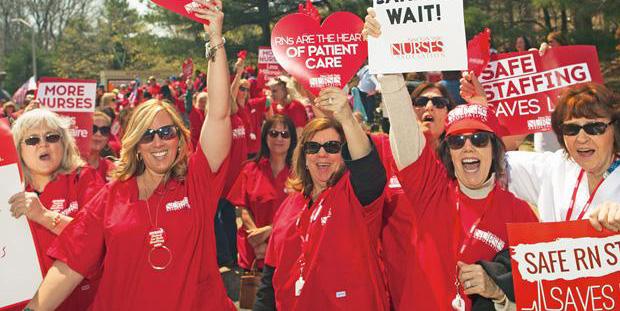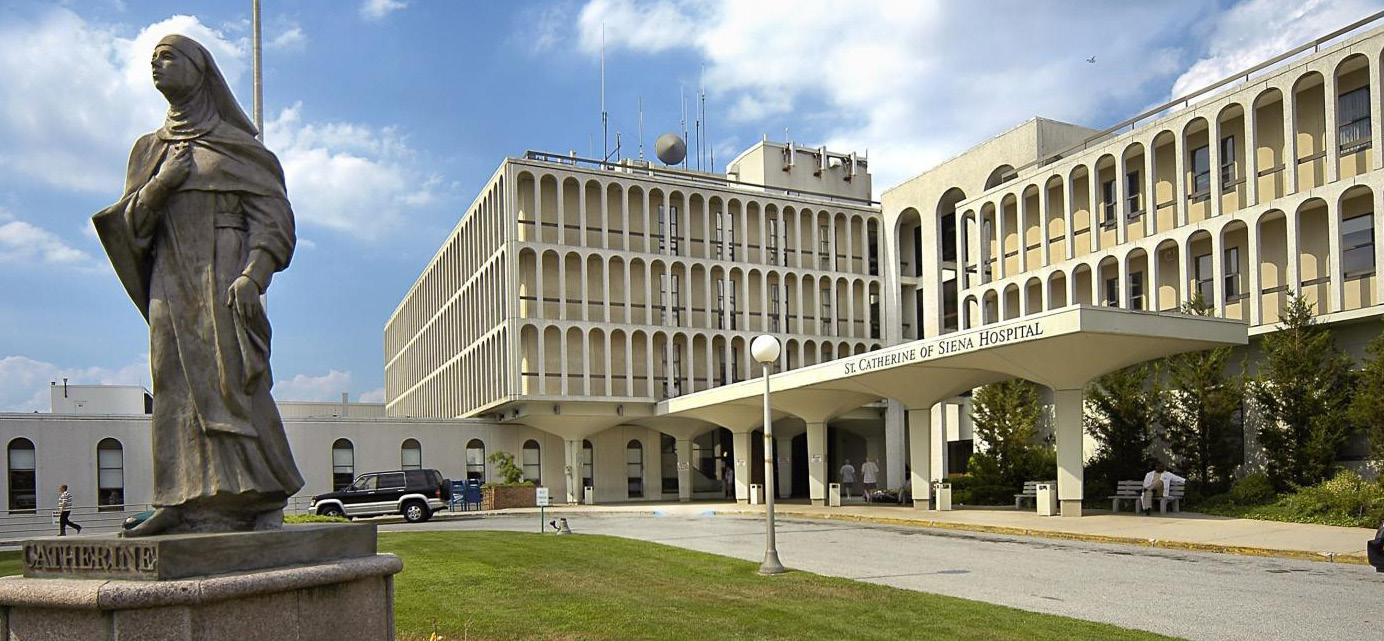
4 minute read
St. Catherine’s on Verge of Striking: ‘It’s All About the Patient in the Bed’
By Kaitlyn Foley
This past week, 98% of nurses at St. Catherine’s of Siena Hospital in Smithtown voted in favor of a strike to protest lack of safe staffing and low wages.
Advertisement
As the lowest paying hospital in Suffolk County and one of the lowest on the Island, St. Catherine’s struggles with recruiting and retaining nursing staff. In the last three years, the hospital has lost over 100 nurses.
“The biggest reason nurses cite are, one, leaving for other opportunities in comparable hospitals because they are being offered better wages and perks like sign-on bonuses and paid educational opportunities, and two, mistreatment and abuse by management,” said Diana Moreno, Communications Manager of the New York State Nurses Association (NYSNA).
“Their main demands have remained the same throughout their contract fight: Safe staffing and respect.”
“It is a very serious decision; everyone is concerned about the patients at the hospital,” says Lorraine Incarnato, who’s worked with St. Catherine’s for over thirty-five years as an ICU nurse.
Striking is a very difficult decision and most truly hope it does not come to that. However more harm can be done if the hospital keeps going with the current ratios they have.
Safe staffing is more than just a benefit for nurses, it is a critical need for patients. The number of patients assigned to a nurse has a direct impact on the quality of care that a nurse can provide. According to the NYS Safe Staffing for Quality Care Act, “research published in the Journal of the American Medical Association, estimates five additional deaths per 1,000 patients in hospitals which routinely staff with only 1:8 nurse-to-patient ratios compared to those staffing with 1:4 nurseto-patient ratios.”
On high-volume days, St. Catherine’s can have a 1:12 nurse-to-patient ratio in their Emergency Department. “The same study determined the odds of patient death increased by 7% for each additional patient the nurse must care for at a time,” leaving St. Catherine’s with a 28% increased risk of patient mortality.
“Prior to the strike vote we have achieved agreement on ratios for some units (ICU/CCU, Med Surg) and an increase in RN numbers for the Emergency Department,” Moreno adds.

“Our employer has not been willing to offer better ratios for Telemetry or Oncology. Better nurse-to-patient ratios offers the opportunity for much better care, shorter length of stay and less negative outcomes, all the healthcare literature speaks to this.” Moreno refers to the definitive and easily obtainable research regarding the need for safe staffing is hospitals.
The main goal of the NYSNA and St. Catherine’s nurses is to have “safe staffing in every unit to be able to provide safe quality patient care, and the respectful wages that will allow the hospital to retain and recruit nurses,” says Moreno.
“Low pay makes it difficult to recruit and retain enough nurses for Safe Staffing. It becomes a vicious cycle of high turnover as nurses leave for better pay and safer staffing at other hospitals and our patients here suffer with not enough nurses to care for them.”
“It’s a twofold problem, it’s staffing and its retention,” Incarnato adds. “We are losing nurses to hospitals that pay more, we are losing nurses to hospitals in our own system that pay more. It’s ten, fifteen, sometimes twenty thousand dollars more depending what hospital you go to.”
Safe staffing is also seen to reduce avoidable outcomes that patients endure due to lack of proper treatment. Hospitals with a lower nursing staff have higher rates of pneumonia, shock, cardiac arrest, urinary tract infection and upper gastrointestinal bleeds according to the federal Agency for Healthcare Research and Quality.
“It’s really all about the patient in the bed,” says Incarnato. “Unless we get the nurses in, we are never going to get the ratios our patients deserve. That’s the most important thing in this whole equation, is how well the patient in the bed is taken care of. Without enough nurses they don’t get the care they deserve, and that they need.”
“Nurses do not take the decision to go on strike lightly and it is often a last resort, but when they decide to strike it is for patient safety,” Moreno adds. “All the demands St. Catherine’s nurses have made at the bargaining table are connected to the goal of being able to provide safe, quality care to the Smithtown community.”
A vote last Monday, August 7, was conducted by NYSNA resulted in a 98% interest in moving forward with a strike if negotiations cannot be made in the coming days. A meeting between the NYSNA and Catholic Health on Thursday, August 17, will hopefully be the final negotiations.
Once a strike is declared, St. Catherine’s nurses will give the hospital a 10-day notice to ensure they have time to prepare, allowing the hospital to find proper accommodations for the nurses’ patients and responsibilities.
“The decision to strike can be averted altogether if management decides to come back to the table in good faith to negotiate a fair contract for nurses and Smithtown patients,” which would be best-case scenario according to Moreno.
If the strike were to go into effect, this would not be St. Catherine’s nursing staff’s first go around. In 2002, two years after Catholic Health first assumed operation of the hospital, the nursing staff participated in a “nearly four-month strike to protest working conditions and mandatory overtime” according to The New York Times. This strike finally resulted in a win as “the hospital agreed to return to earlier staffing levels that did not require nurses to be responsible for so many patients.”
Though hospital spokeswoman Patricia Stickle declined to comment how much the strike costed the hospital in 2002, this number will surely be a deciding factor at this week’s negotiation table.










